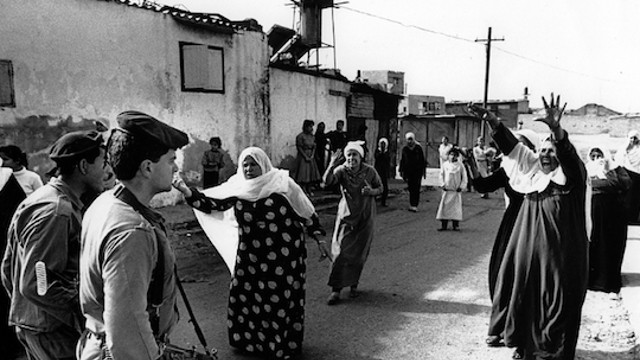lashes, confrontations and demonstrations have taken place over the past several days between Palestinians and Israeli soldiers in most of the cities, villages and refugee camps of the West Bank. A majority of these confrontations have occurred in the zones between Area A, under Palestinian Authority control, and Areas B and C under Israeli control. This characteristic is reminiscent of the early days of the second intifada in October 2000, when hundreds of Palestinians demonstrated against the visit of then Israeli opposition leader Ariel Sharon at Jerusalem’s al Aqsa mosque. Like October 2000, today numerous protest activities are taking place due to Israel’s current attempts to alter the status quo of al Aqsa.
What is new today, however, is the dramatic escalation of Israeli settler attacks against Palestinians following last week’s killing of two settlers in the northern West Bank. Dozens of attacks were organised by settlers, primarily in the northern West Bank. Dozens of Palestinian-owned cars were stoned and vandalised, fields and crops were burned and homes were attacked. It is clear that the settlers control movement on numerous West Bank roads, while Israeli soldiers do almost nothing to stop them. And unlike the past, settlers are attacking Palestinian villages at night, again with the passive or active support of soldiers.
Confrontations are escalating, and no end is currently in sight.
Palestinian medical sources report that some 450 Palestinians were shot by live and rubber-coated steel bullets in the past several days. Twenty of them are in critical condition. Five Palestinians were killed by Israeli soldiers, including the 12-year-old child Shadi Obeid Alalh, who was shot in the northern entrance of Bethlehem. Seven cases of soldier and settler attacks of Palestinian ambulances have further been reported.
Clashes and confrontations are escalating, yet Palestinian commentators note that joint leadership from the political parties is still lacking. The parties issued individual statements and positions calling on Palestinians to face the attacks by settlers and soldiers, establishing committees in the targeted areas to protect the local population. Last Monday the national and Islamic political parties issued a joint statement calling on people to demonstrate in the aforementioned contact areas.
Several commentators note that just like in the first and second intifadas, here too Palestinians as individuals began demonstrating while the political parties ran to keep up; people thus force the political parties to take responsibility and leadership.
Others note that for an intifada to occur, the Palestinian Authority must change its relationship with Israel, ending the security coordination and other agreements so that the Palestinians come face to face with the occupation. Calls are further made for the PA to issue a clear political message with concrete demands, and to end the internal division between Fatah/Hamas or Gaza and Ramallah.
Yet all Palestinian commentators are in agreement that the Palestinian struggle will not be as it was before. Ongoing Palestinian actions on the ground will be reflected on the political level.




